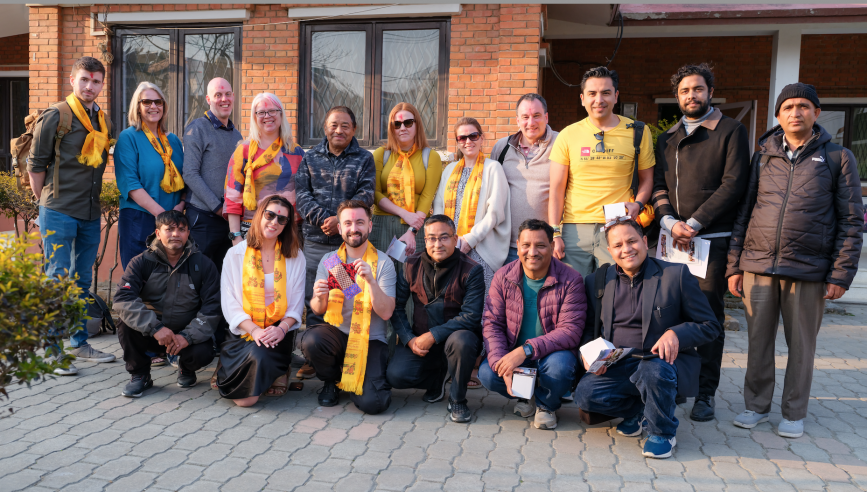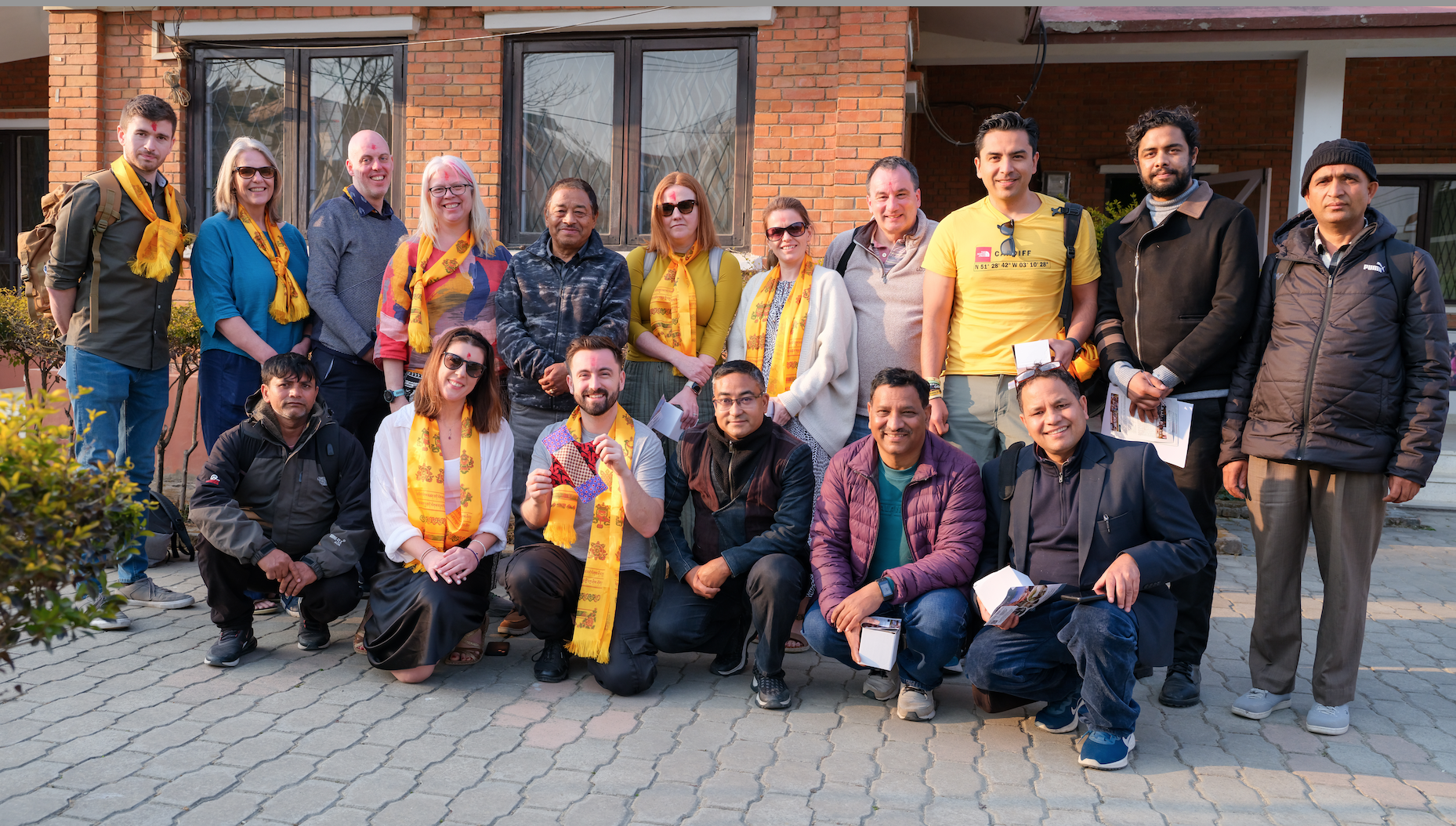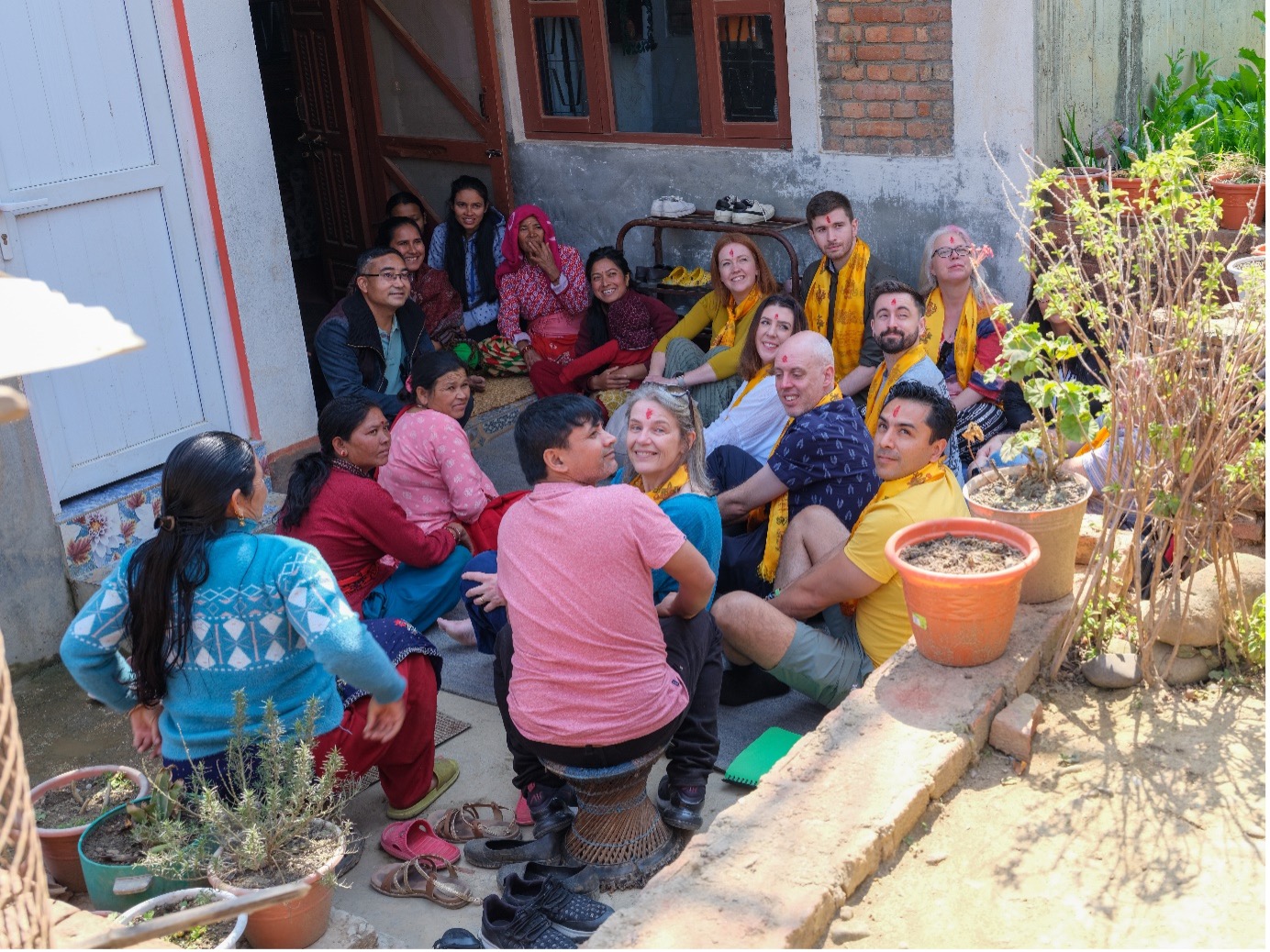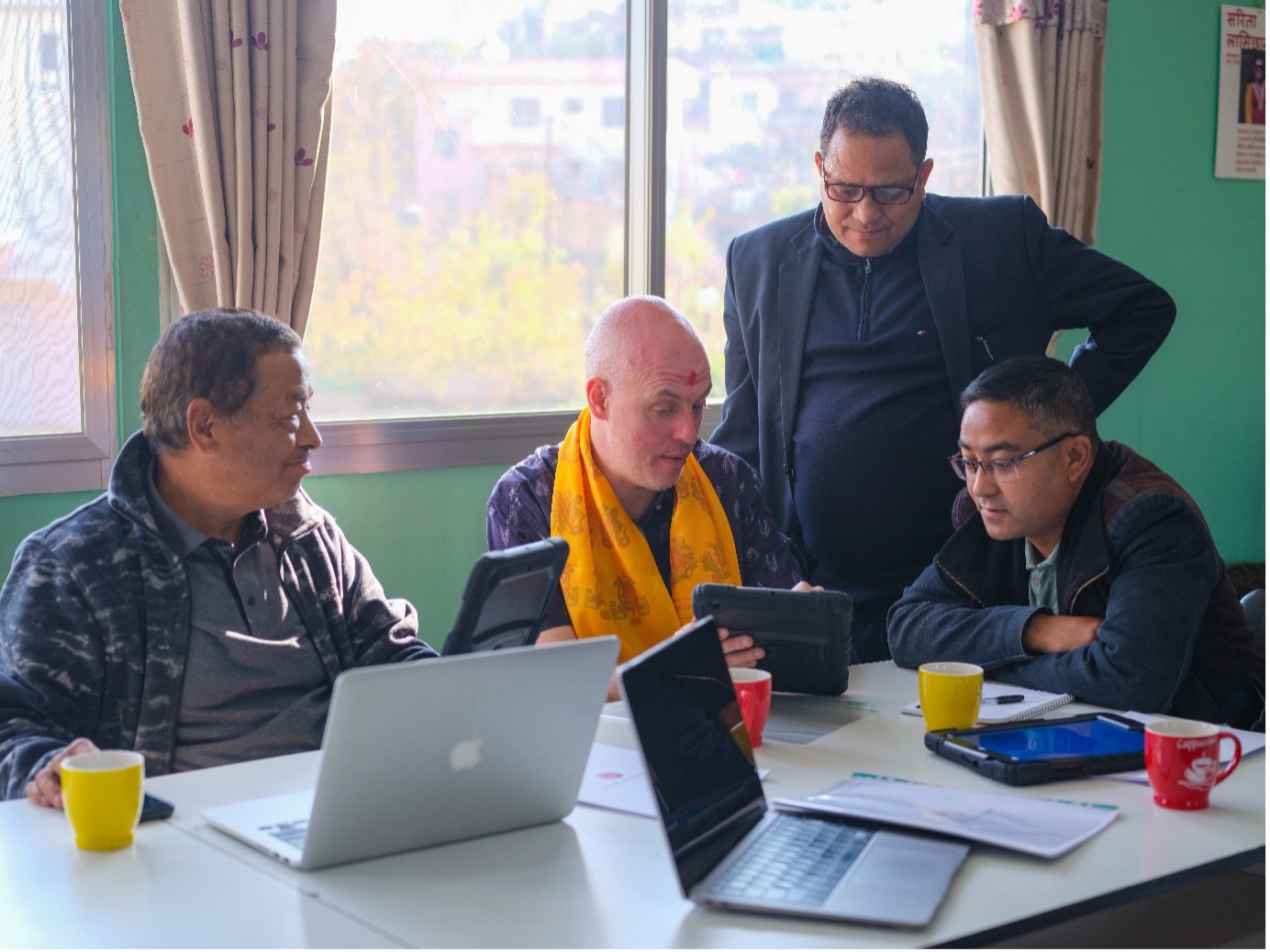SunPad Study Nepal Visit 2024
9 April 2024
– Rebecca Milton, Nigel Kirby, Dave Gillespie and Sue Channon
The next phase of Sunpad a study involving developing and testing self-cleaning period products, opened in January 2024.
Self-cleaning period products designed to kill up to 99.999% of bacteria when exposed to sunlight are to be distributed in remote rural communities in Nepal. 400 pads, fitted with a fabric insert developed by Cardiff University scientists, will be distributed to 50 women as part of a programme of field studies funded by the Bill & Melinda Gates Foundation.
The product development work has been led by Cardiff University Schools of Chemistry, Pharmacy and Pharmaceutical Sciences. The Centre for Trials Research team of Dave Gillespie, Becca Milton, Rebecca Cannings-John, Nigel Kirby, Alys Irving and Sue Channon joined the study group and over the next 18 months the work will be focussed on feasibility and small field trials of the product in Nepal.

The following text is drawn from the report to the Bill & Melinda Gates Foundation written by Dr. Mike Pascoe, SunPad team member, based in School of Pharmacy.
Some of us were lucky enough to travel to Nepal for a study visit: Our first day was spent together with the Nepali members of the team including members from Global Action Nepal and Tribhuvan University, working on the practicalities of delivering the study. What a difference it made to meet our study partners and work face to face after so many Zoom meetings!
Day 2 and team SunPad kicked off the day with a series of community engagements, thoughtfully coordinated by our partners at Global Action Nepal (GAN). We began by visiting their learning center in Lalitpur, near Patan, where we had the opportunity to meet the dedicated members of their team. After each being presented with a khata (ceremonial scarf) and enjoying a cup of chai, we proceeded to a local high school supported by GAN, witnessing firsthand the impactful extracurricular activities and teacher training they provide. Notably, the senior students showed keen interest in our aspiration for SunPad to be manufactured locally in Nepal.

Our next stop took us to Lali Guras (rhododendron), a cooperative originally established in 2012 by mothers from the local Dalit community, supported by GAN. We were fascinated to learn about their self-funding model, where each member contributes to shared savings, enabling them to access small loans for education and entrepreneurial ventures in agriculture, animal husbandry and crafts. This empowering model of collective self-assistance is endorsed by authorities across Nepal. For Lali Guras, individual contributions are match-funded by GAN and the group now welcomes women from other social groups.

During our visit, we engaged the women in conversations about SunPad, particularly our study protocol and the adoption of recommended product care practices, such as soap-free cleaning and drying. Encouragingly, the group expressed no reservations regarding the fundamental aspects of the protocol or product use and were even interested in being involved in future manufacture. As put by the group: “We are ready for SunPad”.
Our final visit took us to a local health post providing preventative services to approximately 8000 community members. After discussing SunPad and its intended application, the health team expressed enthusiasm of its potential benefits. They also raised an intriguing question: Is there a way for end-users to verify the authenticity of SunPad or its continued functionality over time?
Drawing parallels with haemoglobin, which is degraded by SunPad, the team identified chlorophyll as a readily available analogue which can be used to demonstrate its self-cleaning properties. Specifically, a simple water extract of chlorophyll from plants could be utilized as a spot test, where decolorization after being placed in the sun may potentially serve both as an engagement activity and as a means for end-users to independently verify product authenticity. The product development team has planned an experiment to help develop this demonstration to communicate the potential benefits of SunPad — particularly its selective antimicrobial properties — to the community.
Before leaving the health post, the team also discovered that data on urinary tract infections is systematically collected in a readily accessible national database, a revelation Dr. David Gillespie (Centre for Trials Research) believes could be instrumental in evaluating future reproductive health interventions.
Following the morning of visits, the team reconvened at the Learning Centre for a traditional Nepali lunch before splitting into two focused working groups for the afternoon to refining the processes, standard operating procedures and logistics for all parts of the study.

On day 3 the focus was on the teams application to Nepal’s National Health Research Council (NHRC) for study approval. This included collating necessary documentation and planning an additional small study in the UK, to provide initial data on in-human product safety.
Following the tour, the team gathered for a final farewell meal at Nepali Chulo. Amidst savouring local Newari cuisine, the restaurant treated the team to a series of live dance performances originating from diverse communities across Nepal. Fuelled by shots of raksi, a local distilled beverage, the team were invited to join the dancers onstage for a final group dance. Bidding farewell to BK and thanking him for a wonderful week, the team headed back to the hotel to prepare for the journey ahead. As the team embarked on the 22-hour journey back to Cardiff, we reflected on the productive exchanges of ideas and cultures, leaving us invigorated and eager for the upcoming stages of the SunPad project upon our return to work.
This blog is based on research funded by the Bill & Melinda Gates Foundation. The findings and conclusions contained within are those of the authors and do not necessarily reflect positions or policies of the Bill & Melinda Gates Foundation
- June 2024
- May 2024
- April 2024
- March 2024
- December 2023
- November 2023
- September 2023
- July 2023
- June 2023
- April 2023
- March 2023
- February 2023
- December 2022
- November 2022
- October 2022
- September 2022
- August 2022
- July 2022
- June 2022
- May 2022
- April 2022
- March 2022
- February 2022
- January 2022
- November 2021
- September 2021
- July 2021
- June 2021
- May 2021
- March 2021
- February 2021
- December 2020
- November 2020
- September 2020
- August 2020
- July 2020
- January 2020
- December 2019
- October 2019
- September 2019
- July 2019
- June 2019
- May 2019
- April 2019
- February 2019
- December 2018
- November 2018
- October 2018
- September 2018
- August 2018
- July 2018
- June 2018
- May 2018
- April 2018
- March 2018
- December 2017
- October 2017
- August 2017
- July 2017
- June 2017
- May 2017
- April 2017
- March 2017
- February 2017
- January 2017
- December 2016
- October 2016
- August 2016
- June 2016
- April 2016
- March 2016
- February 2016